Lebkuchengewürz (German Gingerbread Spice)
This post may contain affiliate links. See my disclosure policy.
THE essential ingredient to authentic tasting Lebkuchen, Pfeffernüsse and more, absolutely NOTHING compares to the bold and vibrant flavor of homemade Lebkuchengewürz! The fragrance and flavor of this German gingerbread spice will make you think you’re walking the streets of one of Germany’s famous Christmas markets!
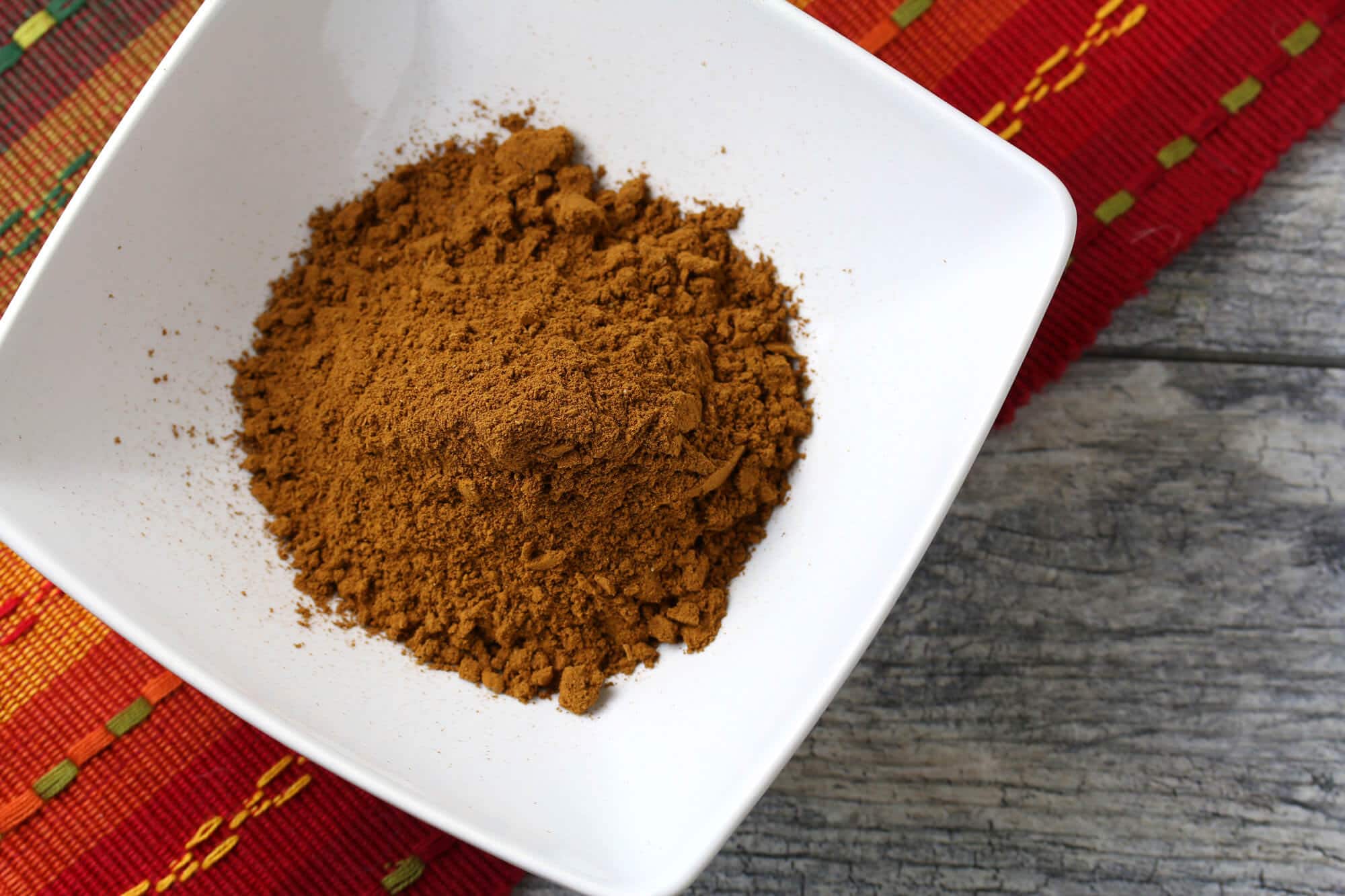
What is Lebkuchengewürz?
Many of you will have no idea what this is. Others of you will be cheering because you know exactly what it is and what it’s for. Lebkuchen Gewürz is a German gingerbread spice blend with an exceptionally beautiful depth and complexity of flavor. It’s unrivaled by anything comparable. Lebkuchengewurz an essential ingredient for a variety of German baked goods during the Christmas season, most notably Lebkuchen and Pfeffernüsse.


For those of you who are familiar Lebkuchengewürz and live outside of Germany or western Europe, you’ll know how nearly impossible it is to find it. And if you do, it’s expensive and often just not very good. Non-German brands try their best to replicate it but just don’t get the flavor profile correct. And if you do find a German brand it’s the same story as with all pre-ground spice blends: Once spices have been ground their oils evaporate very quickly and they lose flavor. And the longer they’ve been sitting around (in the warehouse, then at the store, then in your cupboard), the more flavor they lose.
BUT, if you want a cheaper option (if you use the spices in your cooking anyway) AND, most importantly, a superior flavor (if you buy whole spices and grind them yourself), this recipe is for you!
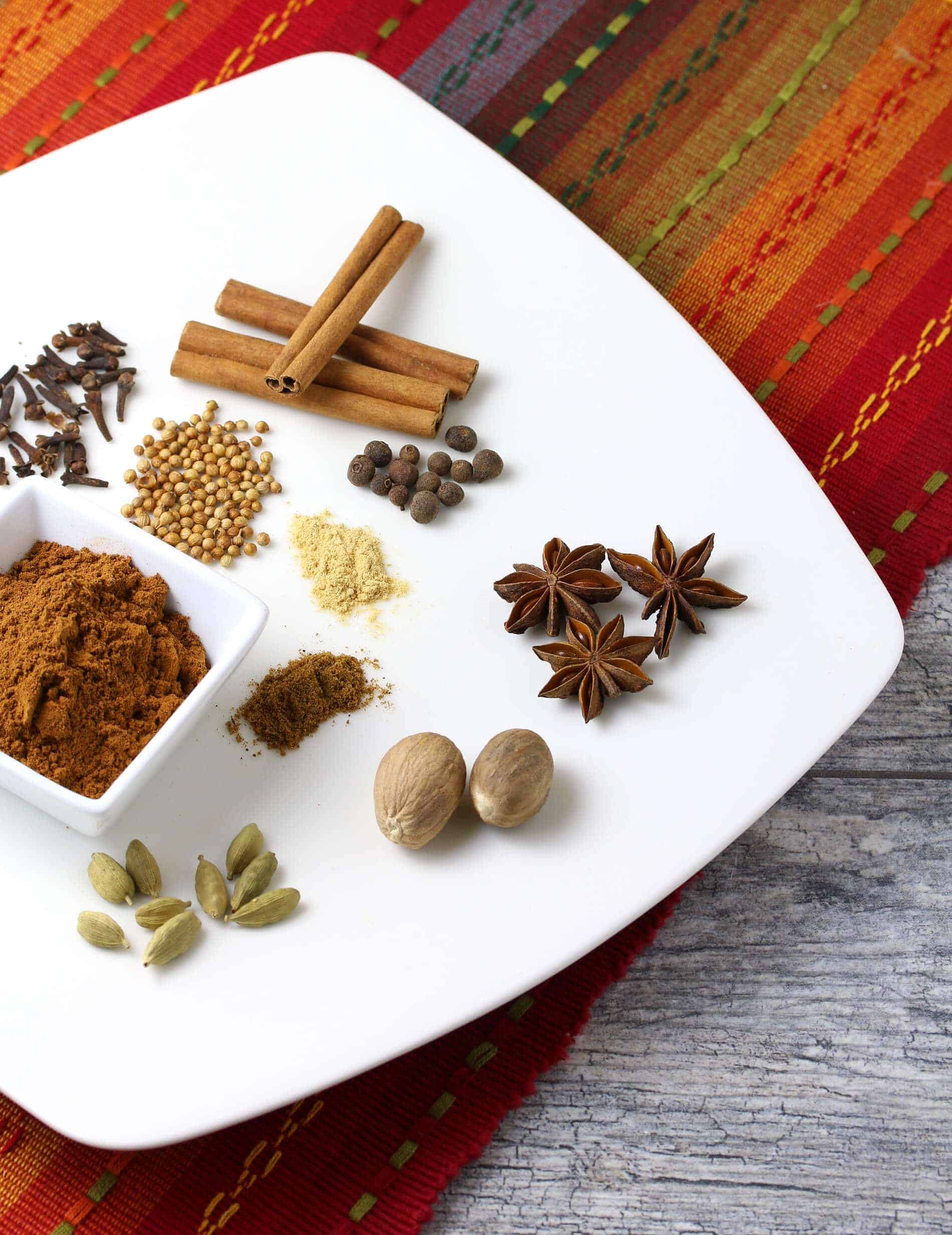
Now, I know what you may be thinking: I don’t want to buy all of those spices just to make this Lebkuchen-Gewürz and then the rest goes to waste! NOT TRUE!
Most of these spices have sooooo many different uses for a wide variety of cuisines. For example, I can think of one cuisine that regularly uses every single one of these spices: Indian. Need some great Indian recipes? I’ve got you covered! Some Great Indian Recipes.
And of course you’re not just limited to Indian food, these spices are super duper versatile. Just type in their names one at a time into the search box above or Google them and see what you find!
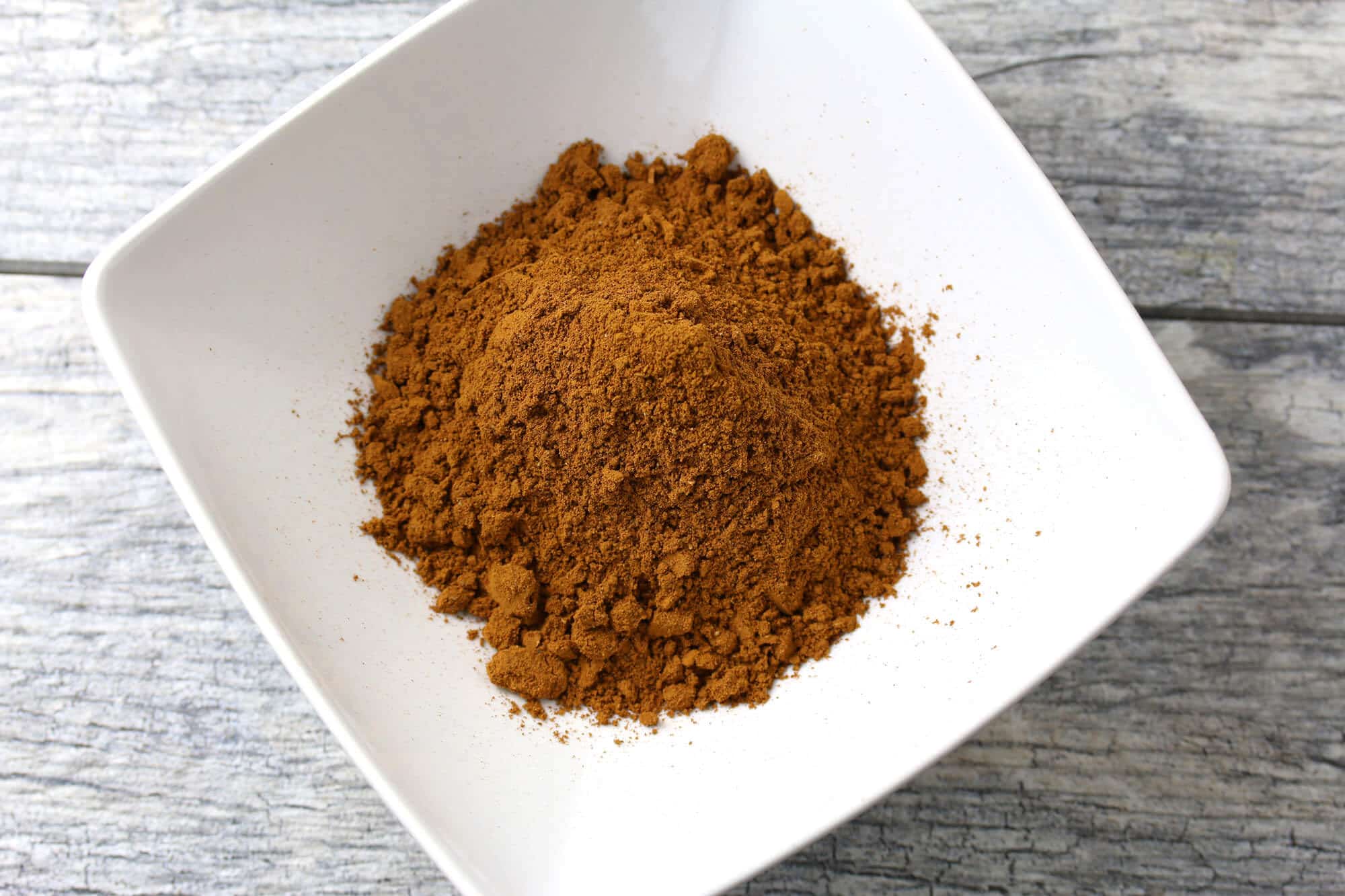
What Spices Are in Lebkuchengewürz?
Some of these spices you can find in your local grocery stores but many you won’t. Most good health food stores will though. And again, if at all possible go for the whole spices so you can grind your own for better flavor.
If you don’t have a well-stocked health store nearby, Amazon is a great place to find all of these spices and at a reasonable cost. You can buy pre-ground but I always buy whole spices and grind them myself in a coffee/spice grinder for a far superior flavor for any dish I’m making. Here’s what you’ll need (and don’t cut corners and leave anything out because each of these spices plays an important role):
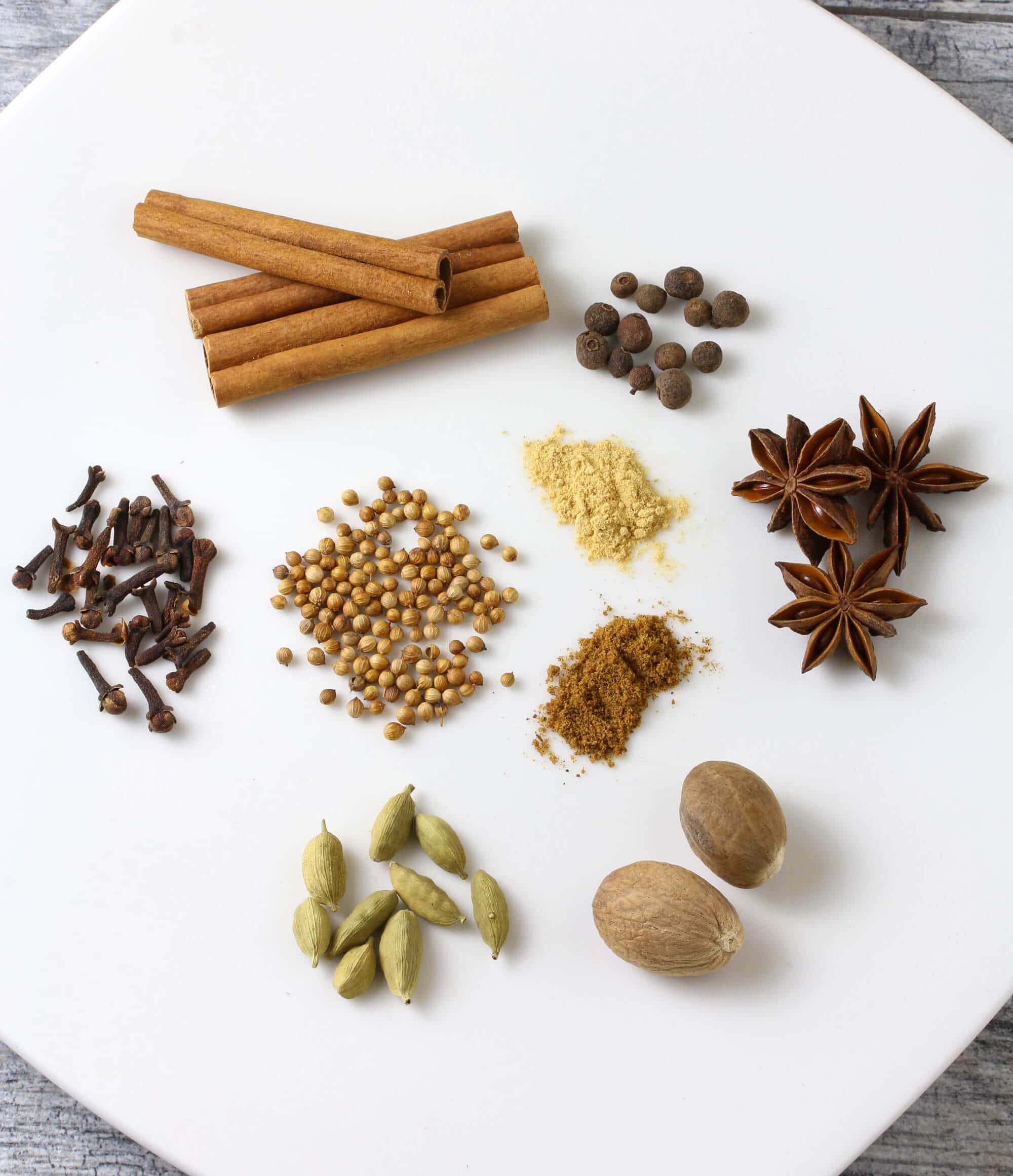
Lebkuchengewürz Recipe
Whether using pre-ground or grinding your own as pictured below in a coffee/spice grinder, you simply combine the ingredients together.
Keep the Lebkuchengewürz stored in an airtight container in a cool, dark place and use it within a few months.
For best flavor though, only make what you need for a period of a week or two because the flavors will dissipate over time.
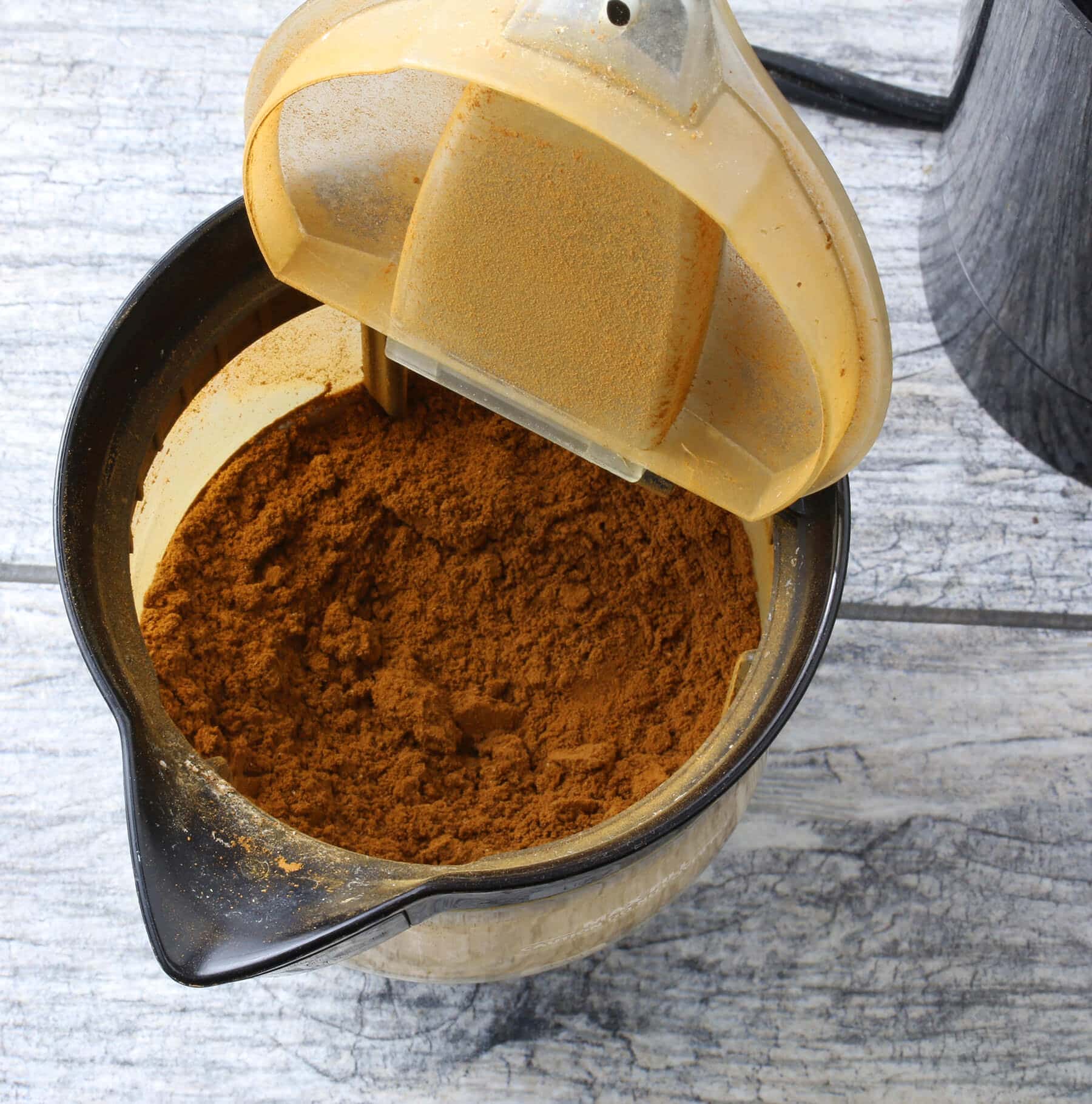
That’s it! Your Lebkuchengewürz is ready to use.
Enjoy!
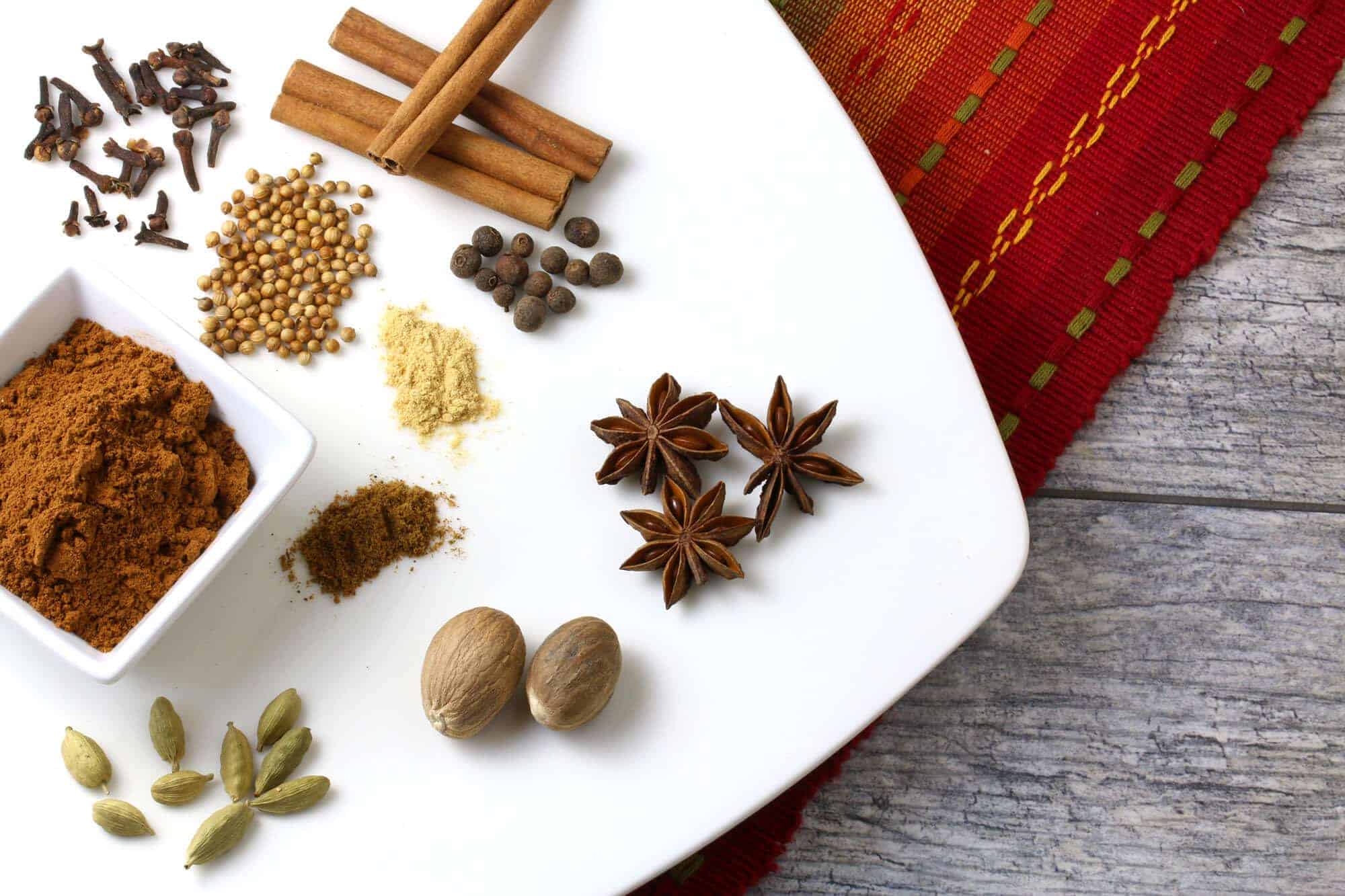
For more phenomenal homemade spice blends be sure to try our:
- British Mixed Spice
- Pumpkin Pie Spice
- Greek Seasoning
- Old Bay Seasoning
- Curry Powder
- Creole Seasoning
- Garam Masala
- Dukkah
- Za’atar
- Chinese Five Spice
- Chili Powder
- Montreal Steak Seasoning
- Poultry Seasoning
- Seasoned Salt
- Berbere
Save This Recipe
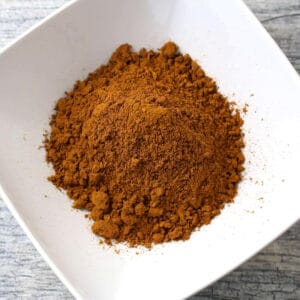
Lebkuchengewürz (German Gingerbread Spice)
Equipment
Ingredients
- 2 1/2 tablespoons ground cinnamon
- 2 teaspoons ground cloves
- 1/2 teaspoon ground allspice
- 1/2 teaspoon ground coriander
- 1/2 teaspoon ground cardamom
- 1/2 teaspoon ground ginger
- 1/2 teaspoon ground star anise
- 1/4 teaspoon ground mace
- 1/4 teaspoon ground nutmeg
Instructions
- Combine the spices together and store in an airtight jar in a cool, dark place. Best if used within 3 months.Note: For superior flavor results, use whole spices and toast and grind them. Simply heat a dry skillet over medium heat and toast the spices until very fragrant. Be careful not to scorch the spices or they will become bitter. Let them cool completely and then grind them to powder in a spice/coffee grinder or use a mortar and pestle.Makes about 1/4 cup.
Nutrition
Originally published on The Daring Gourmet December 3, 2015



















Hi!
As I am German and just eating cookies I made with leftover selfmade pumpkin pie spice I wanted to know if our Lebkuchengewürz is a thing in other parts of the world.
It obviously is :)
I’m glad you like it.
Pumpkin pie spice is nice for october and I really love pumpkin pie, but for christmas I will use the Lebkuchengewürz my mother and grandmother always used:
for 20 g:
5 g bitter orange zest
3 g lemon zest
3 g cinnamon
2 g cloves
2 g star anise
2 g ginger
2 g nutmeg
1 g cardamom
But there are many different blends and thousands of recipes and ready to use products, this is just one traditional recipe, yours sounds authentic, too.
Have you ever tried to build a Lebkuchenhaus? (A house made of gingerbread like in Grimms fairy tales.) That’s fun! And it won’t be decorative for long, because parts of it will disappear (be secretly eaten) every day XD
Greetings from Germany!
PS: For those who are going to use German words more often, If you want to write a word with ä, ö or ü and you don’t have these on your keyboard, the usual (at least for Germans) way of writing it would be ä=ae, ö=oe, ü=ue. (Oh and ß=ss)
Do you have weights for the whole spices? As a point of humour. A friend that was house sitting saw my coffee grinder and went out and bought coffee beans, while I was out. She did not think it through, as I do not drink coffee. Her morning coffee was just a bit off.
Thank you for the recipe, I will make it in a day or two, need to make the candied citrus first.
Lol, Jill, I’m sure that must have added a fun bit pizzazz to her coffee :) I don’t have weights for the whole spices, sorry. It sounds like you have some fun baking plans in store – please let us know how it goes! :)
Hi! I’m so excited to try this spice mix. I was wondering if there was any particular reason you went with star anise rather than anise seed?
Hi Lauren, star anise is more commonly used for Lebkuchengewürz and for baking in general. It has a sweeter, milder flavor than anise seed and so it’s the more common choice in baking recipes and things like mulled wine. Anise seed is also used in baking but less commonly so; more commonly you’ll see it used in medicinal applications like cough syrup, herbal lozenges, etc.
Thanks so much for your quick response, I can’t wait to make some pfeffernusse with this mix!
would you be able to provide the measurements for the whole spices such as 6 whole cloves, 5 cardamom pods, etc…
Yes would love this too, thank you
Hi another cool thing has been made by my family even though it’s supposedly a Christian dish oh my great grandmother made it and my grandmother made it my mother made it but missed some of the spices out because they weren’t available I found it interesting to find that it’s a German dish the word Lebkchuen literally means if you know Hebrew to love cake but I don’t suppose that works in German just curious in the middle East this type of dessert was originally made and brought by a monk coming from the middle East around 11th century more or less I think it might even have been the 13th century or 14th century I forget which and he brought it back as a sweet and it was a spiced sweet that spiced sweet which eventually became what the Renaissance back in the 14th century I think it is called gingerbread is where it derives from and it is still the same kind of sweet we sell here in the middle East it’s made likely and I’m not surprised to find it in an old family cookbook that dates back to the 1700s and was passed to my grandmother on her wedding day from her mother it’s in high German which makes it a little bit difficult to translate and it is culture which means it’s a Jewish cook book they weren’t many at the time I find it interesting since the recipe was supposedly a guarded Secret so it makes it interesting that Jews would be making something that is associated with Christianity so much or maybe because it was common in the middle East and there are certain similarities to certain desserts served in roman. That were commonly found at certain times of the year when to celebrate Hanukkah which is around Christmas not always on Christmas not always near Christmas but close that perhaps it’s a crossover a lot of things these days are across over you’re even arguments over Cholent, but the earliest recipe I have found for it and it’s original name was literally hot pot or hamim (pronounced haa meem) hot or with depending on how you want to translate that… Food is one of those things that people passed one of good cook might give everything but their secret ingredient to a friend these things pass around it’s like people are can’t if you know the Bible or don’t it’s like when it says that Moses lent from his life to others when he taught them, a candle doesn’t diminish in light when it lights other candles in it merely adds to the light, spreads it around.
Thank you for putting up the spice mix it’s like I said similar but a few differences and I do appreciate it because I’ve been wanting to make it even though my mother could never be bothered with making it but then again she wasn’t much of a cook and while she had the cookbook passed down to her from her mother let’s put it this way my dad was the cook in the family the chef I should say in the family which is where I got my love of cooking from I may have gotten the cookbook from her I got my love of cooking from him.
Voice to text is what I use to comment I am handicapped and I depend on it to write what I think it’s supposed to write and it doesn’t do that so if things don’t make quite the right sense above it’s because voice to text really doesn’t work like it should and because I can’t write handicap well I don’t think I have to say anymore yeah my mother made a lebenkuchaun before I was born apparently she wasn’t a very good cook and while it is in the recipe book from my grandmother and it was kosher cookbook from the 1700s my guess it’s been around in the family for some time before that but that’s as far as I can trace it anyhow forgive the above for not making as much sense as I would have liked I’m dealing with voice to text which doesn’t work properly most of the time and therefore I thank you for the above spices in the recipe like I said when my mother used to make it she never mentioned things like coriander or anise seed so my guess is since both spices and ginger she hated so my guess is she either didn’t like it or it was not available to her cuz I asked her about the recipe once and she said oh yes and then went into a whole thing about how she used to make it before I was born but she didn’t like making or cooking things so my dad did all that, he was the baker in the family he was the cook in the family he was French that should say it all.
Hi Kimberly…
My Aunt Lotte passed before I had a chance to get her recipes…other family members got to them before me.
Looking forward to (now thanks to you) making family loved lebkuchen!
As I do not read german (my born and raised German father so disappointed), can you tell me how to use Hefeteig by Kathi…I understand its a German yeast mix…no english measurements on the box!
Hi Caroline, I haven’t used that product. Is this what you’re looking for (the directions for using it are posted)?: https://europeandeli.com/products/kathi-hefeteig-yeast-dough-mix-2
Hi Kimberly, I’ve only recently come across your site and am looking forward to trying your recipes, with this Lebkucken Spice blend the first. I have a question/suggestion – the ingredients say 1 tablespoon of cinnamon. so do I assume that’s an American tablespoon? Which is equivalent to 3 teaspoons, whereas in Australia a tablespoon is equivalent to 4 teaspoons. I expect 25% more cinnamon would make a big difference to the result? What do you think?
Hi Sue, yes, those are American tablespoons, not Australian. I hope you enjoy the recipes!
Canada and australia new zealand and europe are in metric measurements how about adding degrees celcius and metric ingrediant mesurements for the rest of the world lovers of german food terry cooke markham ont canada
With the exception of teaspoon/tablespoon measurements, most of my recipes have a conversion feature: To the right of the ingredients are two boxes that say “US Customary” and “Metric”; click on “metric” and it will give you the metric conversions.
Do your own conversions. be thankful for someone’s time and effort to write these recipes.
This is very good! I used in a soft gingerbread cookie recipe from smalltownwoman to try to replicate a local bakery’s gingerbread cookie bar that my SIL loves. They turned out very well! The only adjustment I made is I used 1/2 t. ground anise seed instead of the star anise.
Wonderful, Dana, so glad you enjoyed it, thank you!
Hey, I read both this article and the one on British mixed spice mix. Wondered if you can shed any light on this spice mix my aunt bought in England that has a list of spices in French, that looks similar to both the Lebkuckengewuerz here and the British mixed spice: Cinnamon, ginger, coriander, anis, cloves, star anise, nutmeg, pepper. I thought at first this was just a pumpkin spice, but now I’m wondering if there’s a French equivalent to British mixed spice? TIA.
Hi Angelina, other than quatre épices which only contains four spices I’m not sure if there is a ready-made spice blend, like a French gingerbread spice blend per say. There’s the traditional recipe, pain d’épices, that is made with a combination of spices like a gingerbread spice blend, but I’ve never seen those spices sold as a blend in a packet.
Being from England, the mixed spice combination my family have used for many years:
3 measure ground cinnamon *
3 measure ground nutmeg
2 measures ground mace **
1 measure ground cloves
1 measure ground coriander
1 measure ground Ginger
* Cinnamon – it must be ‘true’ cinnamon’, or ‘Ceylon’ cinnamon. If you have Cassia, which I understand is the type of cinnamon usually sold in the USA, please do not use it. Cassia is a cheap imitation, very bland and apparently highly toxic in comparison.
** If mace is not available add another measure of nutmeg – Mace is the dried waxy coating of nutmeg and has a similar, but milder taste to nutmeg.
I love experimenting with herbs and spices, so have tried this mix and adding other ingredients.
My favorite extra so far has been a measure of chocolate mint (home grown as I cannot find any for sale on the internet).
Cassia cinnamon is not necessarily inferior; it’s just different. Saigon cinnamon, which is closely related to Cassia, commands as high a price as Ceylon sometimes, and I think it tastes better in certain recipes. That being said, I’ll probably use Ceylon for this recipe, since I think that is more common in continental Europe (and Mexico too, I think).
Toxicity in cinnamon comes from a compound called coumarin which thins the blood and can damage the liver. Ceylon cinnamon has very little coumarin, while Saigon cinnamon generally has the most. Cassia and Korintje cinnamon are somewhere in the middle.
You’ll find that there are number of common baking spices that, if consumed in high enough quantities, can be quite toxic. Black liquorice can cause your potassium levels to drop. It killed a man recently who ate a bag or so of it every day for a few weeks. Nutmeg has a toxic narcotic substance that can cause hallucinations, nausea, vomiting, etc. when more than 1 tsp is consumed at once. Japanese star anise can be toxic to your liver. I could go on.
Generally, in the quantities used for baking, these spices are not dangerous. Just remember the phrase, “everything in moderation” and inform yourself as to what a moderate amount is.
I have been using your wonderful recipe for the last 3 years. I’m selling these Elise Lebkuchen at our winter market and get a lot of appreciation, excitement and happy smiles. Just want to say thank you, your recipe is simply the finest! I’m just getting ready for the first batch of this season.
Fantastic, Renate, that’s wonderful, thank you!
I got a really good lebkuchen recipe from a German friend and used this recipe for the lebkuchengewurz (lebkuchen spice), using mostly pre-ground spices. I think that fresh ground will make a more flavorful lebkuchen. The lebkuchen recipe used about 2/3 of the spice mixture. What to do with the leftover? It goes nicely with coffee, although you’ll have to experiment with quantities because too much can be overpowering (unless you drink Starbucks or other “Seattle-style” scorched-bean coffees).
Hi Kimberly, I’ve made this for the past two years and love it in my Pfeffernüsse, peppernut, an gingerbread.
This year I used Ceylon Cinnamon and like the flavor much better since it doesn’t overpower everything else. I aslo use anise seed instead of star anise for the same reason. From a lot of my research, anise seed would have been more traditional to Europe as imported star anise would be expensive.I also added a half teaspoon of fennel.
Thanks, Justin! Even anise seed would have come with a high price tag because it had to be imported from the Mediterranean. While the nobility used exotic spices on a regular basis at least the Middle Ages, for the less privileged classes most of these spices would have been far rarer treats.
Kimberly, your ingredients say cinnamon stick. Would you recommend the Ceylon cinnamon (cinnamomum verum)
or the Chinese cassia (cinnamomum cassia)? Sticks of true cinnamon (cinnamomum verum) arr easier to grind in a average coffee grinder, like a Krups, by first crumbling it a bit in your hand and putting the piecesin the grinder. But Chinese, and Vietnamese (“Saigon” cinnamon) stick cinnamon is impossible to crunch in hand, so you’d need to smash it with a heavy tool, like a hammer, and even then, it might be difficult to pulverize in a coffee grinder. I finally broke my Braun coffee grinder by regularly grinding whole cloves in it, but my Krups grinder is now picking up the job where the Braun left off. (The Braun grinder was an older purchase) But I use both kinds of cinnamon often, as they both have different attributes. Just a heads up on grinding the cassia sticks, It is not very easy.
That’s a good point, Kathryn, thanks for those insights. I’ve never had a problem grinding them in my Krups grinder but off-hand I’m also not sure which kind of cinnamon sticks I have, I’ll have to take a look. In the meantime I would just say, use which ever ones your grinder has the capacity to grind!
Kimberly, when you grind the cardamom do you use the whole pod, or do you just use the seeds inside? Can’t wait to try this!
Hi Molly, you use just the seeds inside and grind those.
Hi! A related question – is it half a teaspoon of pods or half a teaspoon of decorticated seeds (notice how I snuck ‘decorticated’ in there – I’ve only ever seen the word used in discussions of cardamom so I didn’t want to let an opportunity to use it slip by!)? Thanks!
Lol, Kevin! It’s half a teaspoon of decorticated seeds :)
I love lebkhuchen cookies from the store….m now I can make them at home
I am SO happy to have found your recipe for Lebkuchen and the lebkuchengewuerz. My German mother-in-law (from Nuremberg) used to make these every year at Christmas. She became ill and passed away before she could teach me how to make these. My brother-in-law found her recipe (in German) and translated it, but several ingredients and most of the directions were missing (no spices listed and only half the nuts). I’ve experimented over the years, and have something approximating her delicious cookies, but I’ve been totally guessing on the spices. One of the few things I was sure about, was that Oma’s recipe was gluten free, and every other recipe I’ve seen for Lebkuchen has flour in it. Thank you, thank you, thank you for posting these recipes – I will be baking them as soon as the Back Oblaten arrive!
Wonderful, Carol! Please let us know what you think once you’ve tried them!